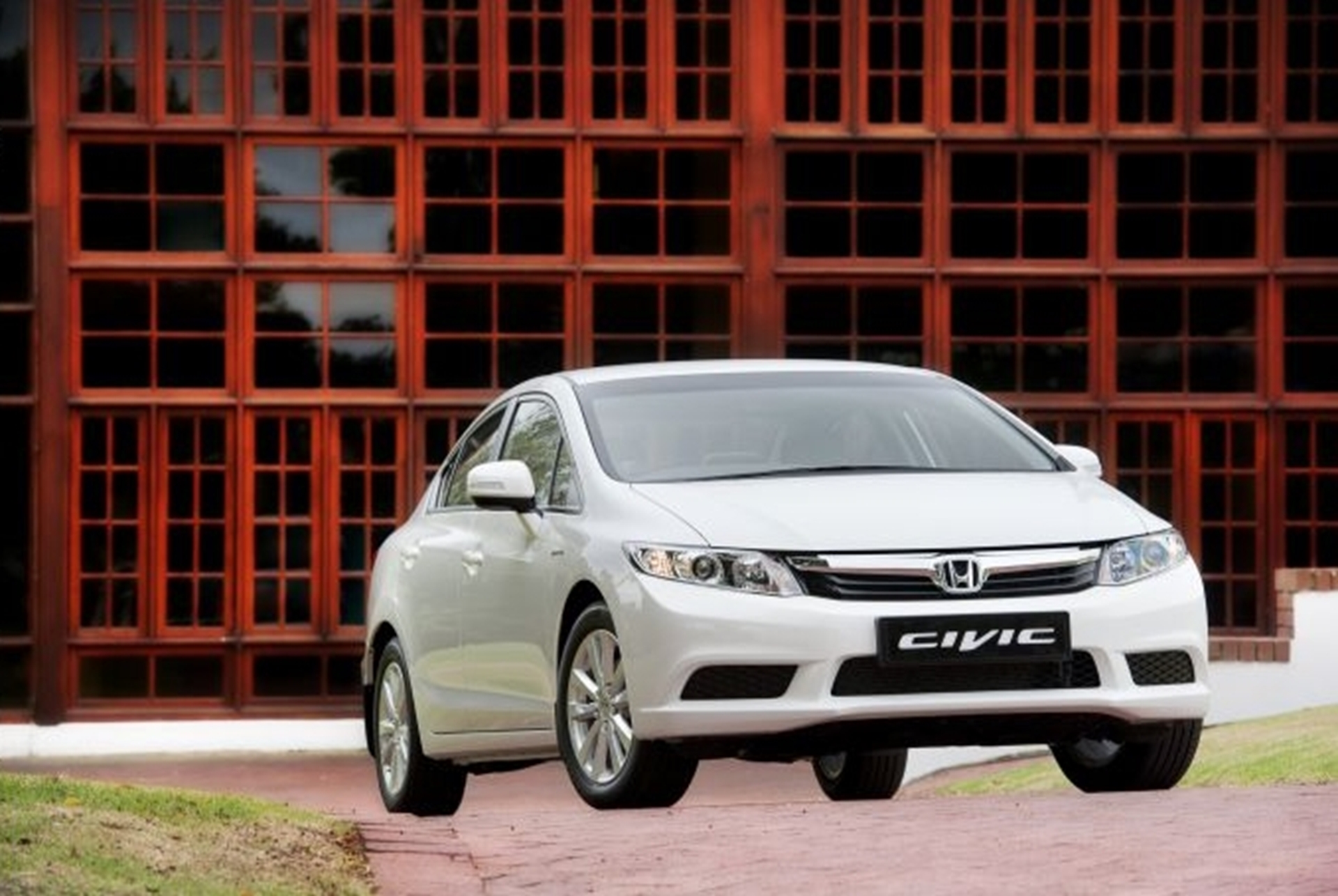Efficient yet invigorating
The Honda Civic has always been renowned for its class-leading combination of performance, efficiency, fun-to-drive character and peerless refinement. The compelling new 2012 model reinforces these virtues, while setting several new benchmarks.

The Civic range has been expanded with the addition of a competitively positioned 1,6-litre model to complement the established 1,8-litre derivatives. It also offers both manual and automatic transmissions across the entire line-up.
The new 1,6-litre 16-valve DOHC engine employs all the cutting-edge features found on the larger-capacity unit, including Honda’s trademark i-VTEC intelligent variable valve timing, PGM-FI programmed electronic fuel injection, and drive-by-wire throttle control.
Accordingly, it is credited with an impressive 92 kW peak power output at 6 500 r/min, allied to a maximum 151 Nm of torque at 4 300 r/min – figures that position it amongst the best in its category.
Significantly, with the reduced weight of the 2012 Civic body, the 1.6 derivative offers an unrivalled power-to-weight ratio of 12,61 kg per kW, which translates into superlative performance and economy.
Indeed, the Civic 1.6 Comfort Manual is credited with a 0-100 km/h time of 9,6 sec and a top speed of 200 km/h, with corresponding figures of 12,0 sec and 197 km/h for the five-speed automatic.
This engine is exceptionally efficient too, achieving an EU combined-cycle fuel consumption figure of 6,7 l/100 km, and a corresponding emissions rating of 160 g/km (6,8 l/100 km and 161 g/km for the auto).
The familiar and highly-rated 1,8-litre i-VTEC engine has been retained, but has undergone a raft of changes for the 2012 model. Power and torque delivery have been optimised with a new low back-pressure, close-coupled catalyst, increased intake airflow volume and revised valve timing.
At the same time, friction has been reduced and fuel efficiency optimised through the use of a patterned coated piston, a new type of engine oil and increased exhaust gas recirculation (EGR) control. Emissions and durability too have come under the spotlight.
Power is rated at 104 kW at 6 500 r/min, linked to 174 Nm of torque at 4 300 r/min – the latter characterised by a more progressive and smoother torque curve in the interests of improved mid-range driveability. Zero to 100 km/h acceleration is achieved in as little as 8,8 sec (for the 1.8 Comfort), matched to a 200 km/h top speed.
The Euro 4-compliant 1,8-litre engine is particularly impressive in the fuel economy stakes, matching the 6,7 l/100 km and 160 g/km figures of the 1.6 in the case of the manual – thus making it among the best-in-class.
Notably, the Civic 1.8 is capable of even better consumption than the manual model when fitted with the comprehensively updated five-speed automatic transmission, with corresponding figures of 6,6 l/100 km and 157 g/km.
The automatic transmission features revised gear ratios and improved shifts, quieter and smoother running and reduced weight, all of which contribute to improved performance as well as greater fuel efficiency.
In the range-topping 1.8 Executive, which is fitted with paddle shifts as standard, the automatic transmission includes Cornering G-Shift Control. This system senses the vehicle’s progress through a turn and eliminates unnecessary mid-corner up or downshifts for greater control.
A central development goal for the 2012 Civic was to enhance the car’s fun-to-drive character. A contributing factor is the greater use of high-strength steel for the body structure.
The new Civic employs five percent more high-tensile steel than the previous model, which has resulted in both static and dynamic rigidity climbing by 10 percent. This has also enabled a significant 7 percent reduction in body weight, which translates into one of the best power-to-weight ratios in its category.
Along with the adoption of a new electronic power steering system, the steering ratio has also been optimised. Furthermore, a rigid mounting is employed for the steering gearbox, while the suspension has been extensively revised. Both the front McPherson strut set-up and rear multi-link configuration offer increased stroke and reduced damper sliding friction in the new model.
Combined, these revisions have resulted in improved handling with a smaller roll delay, as well as greater comfort, thanks to its significantly smoother ride.
At the same time, the higher structural rigidity, new suspension settings and extensive sound proofing throughout have enabled further gains in refinement and quietness, especially in terms of containing the transmission of rough-surface road noise to the cabin.


